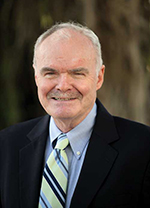When major political events, such as the one we are now enjoying, are taking place, most low information people don’t really understand what they are all about. That is, until Hollywood steps in and makes a movie about it.
That was the case with Watergate in 1972. People who never read a newspaper did not understand what the fuss was about and could not fathom how former President Richard Nixon had to resign over a burglary that he did not even attend.
But then came “All the President’s Men,” and people realized it was about Robert Redford meeting in a dark garage with a very spooky fellow named “Deep Throat.” He went back to his desk at the Washington Post, and with Dustin Hoffman, tried to follow the money. And all this time they had Jason Robards breathing down their necks to make sure they didn’t get their paper sued to death.
The same thing happened more recently with the film “The Post,” which dealt with an event even older than Watergate, and has remained a fuzzy situation ever since it occurred in 1970. But now, thanks to Meryl Streep and Tom Hanks, we know it was about the publisher of the Washington Post worried to tears about her stock price, and not being invited to Washington cocktail parties—all because some unknown kid named Matthew Rhys had come up with Pentagon Papers that said the Vietnam War was a mistake, and Tom Hanks wanted to put it in the paper. Suddenly, after almost 50 years, it all made sense.
Many people don’t remember the real names of the people involved in these dramas, but they do recall who played them in the movie reincarnation. Robert Redford, Tom Hanks and Meryl Streep become more real than Bob Woodward, Ben Bradlee and Katharine Graham. And so it will be when the movie about 2018 turmoil is made.
To give Hollywood some help, we have begun casting the current episode, even as the first books are just appearing. It is, of course, tricky business, for we don’t know yet which of the dozens of figures whose faces are associated with current events will warrant a place in the movie when it all is put to bed. And we also have to find a role for some actors who are necessary to guarantee artistic success. Tina Fey, for instance, and Tom Hanks. Hanks should be easy to place, for he manages to look and sound like anybody he plays, and a number of figures in this film are reasonably close to his age and racial profile. Actors should bear some resemblance to people they play. Mickey Rooney would not be an ideal Shaquille O’Neal. Hanks could play most of the male roles in this drama. Michael Cohen and Paul Manafort, for starters.
Bob Woodward is a must, since his new book has gotten so much ink, and most people recognize him. Although somewhat older, Robert
Redford played him the last time around and, at age 82, he can still remember his lines if called on to repeat his interpretation of the 77-year-old Woodward.
Stormy Daniels, the pornographic film star who alleges a relationship with President Trump, could be played by any number of blondes. We might title it “All the President’s Women.” We think Daniels’ lawyer, Michael Avenatti, has star quality and should have at least a small role in any film. If he had not died 33 years ago, Yul Brynner was born to play him. Maybe Yul has a grandson.
Robert Mueller, of course, is a given. He’s the “Deep Throat” of this saga. Jason Robards, who played Ben Bradlee in “All the President’s Men,” would be just right in his prime, but his prime ended with his life in 2000. In a pinch, there’s always Tom Hanks. With “Saturday Night Live” doing hilarious impersonations of public figures, Kate McKinnon owns the Jeff Sessions part, as well as that of Hillary Clinton, if the former first lady gets a minor role. In truth, Ms. McKinnon could play the entire cast.
James Comey warrants major time, but presents a tall problem because of his height—he’s 6 feet, 8 inches tall. Back in the day, James Stewart (6 feet, 3 inches) would be a good choice, but alas he passed on in 1997. Looking over the lineup of tall actors currently alive, Liam Neeson (6 feet, 4 inches) stands out. Also 6-foot-3-inch Will Ferrell. He’s not too young for the 57-year-old Comey and he has a background in comedy, which could be an asset in this film.
Interestingly, in these kinds of productions a president does not need an actor. They tend to show up in actual film clips, or are viewed briefly from behind. Now, Melania is a different story. We need to get her in this flick, if only to justify the drawing power of Tina Fey. Unfortunately, her only part will be slapping her husband’s hand a couple times. No lines. Just like the original.
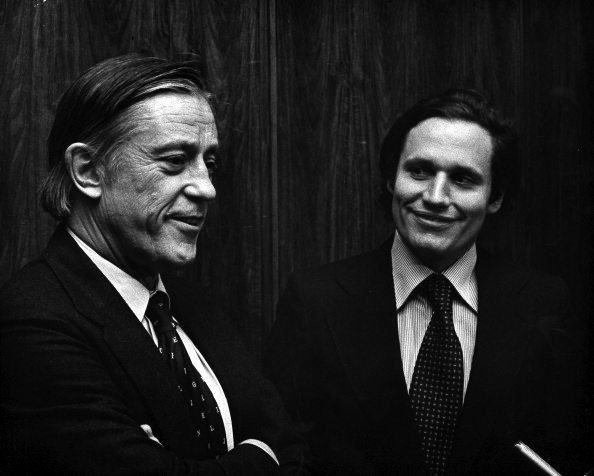
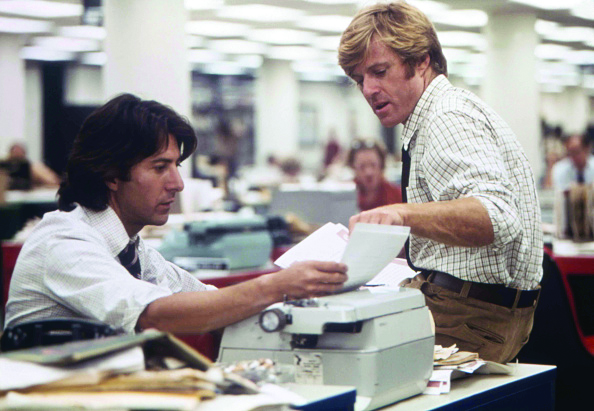
(Top) A young Bob Woodward with Washington Post editor Ben Bradlee during the Watergate era. Robert Redford improved his looks in the 1976 film, as did Dustin Hoffman for Carl Bernstein.
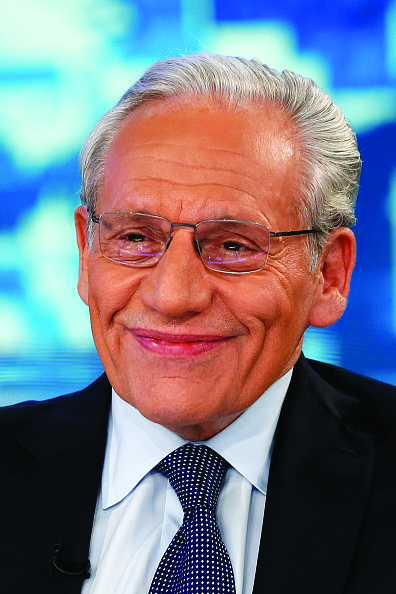
By Dominik Bindl | Getty Images

By Bettmann | Getty Images
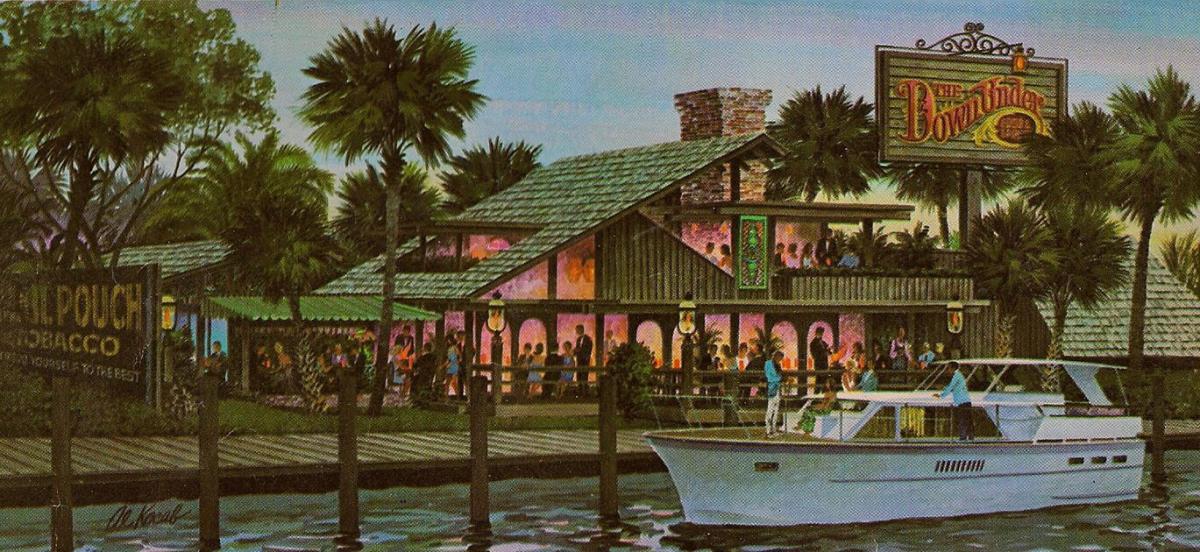
It appeared to be a perfect deal. Not only was the Down Under a successful restaurant, but it was an excellent investment for the handful of friends of Leonce Picot who backed him in what at the time was the most popular high-end restaurant in Fort Lauderdale. It also helped advance the careers of a number of people who were associated with it, including the young architect who designed it.
When Gold Coast magazine wrote about the Down Under in the 1970s, it wasn’t about the cuisine, which was excellent. It was about the deal, how well it had turned out for Picot, his investors and, ultimately, his loyal customers. What would seem to be a questionable location, almost hidden below the Intracoastal Waterway bridge at Oakland Park Boulevard, turned out, with the help of the name, to be an asset. It made Picot, who died at 86 on Aug. 24, seem to be a business genius.
Although the Down Under was the first of several successful restaurants (La Vieille Maison in Boca Raton and Casa Vecchia in Fort Lauderdale) owned by Picot, he was not a novice when he conceived his first venture in the late 1960s. He had grown up in Fort Lauderdale and had good business contacts, partly through his association with the Mai-Kai, which at the time was a hangout for a number of prominent business people. He was director of marketing for the restaurant, which had been successful since it opened in 1955. Picot had a good sense of what would make a winning formula.
His location was not his first choice. According to Dan Duckham, a young architect who was designing his first restaurant, Picot hoped to have a Las Olas Boulevard location. That was a logical choice, for in the ’60s there were not many restaurants on what today has become the leading entertainment venue in the area. But Oakland Park Boulevard was not a bad second option. Much of the town’s business was centered on Oakland Park and Commercial boulevards. Commercial was a particularly strong party drag. The late Jack Riker, a popular bartender known as “Turtle,” used to joke that he was working on a book called “How to see Commercial Boulevard on $1,000 a Day.”
Stan’s Lounge had shown that a waterfront location next to the Commercial Boulevard bridge was viable for a restaurant, but it still took a deft touch to make the Down Under the fast success that it was. Duckham created a beautiful design and Picot assembled a group of prominent backers. Part of the deal was free or discounted meals. His investors were there often, bringing friends. Then, as now, people attract people. As in the immortal words of Yogi Berra, “Nobody goes there anymore, it’s too crowded.”
Within a few years most of the investors had been bought out at a substantial profit, a pleasant bonus to the fact that they had eaten well and often and generally had fun. Dan Duckham, who went on to design almost 80 restaurants, was one of them. He had converted part of his fee into stock. Duckham, now in his mid-80s and still working in Cashiers, North Carolina, recalls: “I quadrupled my money, and we got a $3,000 dividend each quarter—$12,000 a year. The restaurant was going great.”
Indeed it was, and it continued that way for years, lasting under Picot’s ownership from 1968 until 1996. The Sun-Sentinel’s Mike Mayo, who wrote Picot’s obituary a few weeks ago, caught the flavor of the restaurant at its peak. He quoted Picot’s daughter, Laura Picot Sayles, describing busy Fridays when regulars arrived for lunch and were often still at the bar as the dinner hour approached. That may be an understatement. It wasn’t just Fridays. Some weeks it was that busy almost every afternoon. With time it earned the award of an abbreviation—regulars called it the DU. It also inspired some levity. There was a joke about a new cemetery in Plantation to be called the Down Under West.
Smart as he was, not everything Leonce Picot did was brilliant business. A longtime friend was as good a customer as any restaurant could have. His office was close to the restaurant and he was one of those who often went to lunch and was still around at the dinner hour. I don’t know how much he spent a week, but there were days when he dropped $50 on me, for lunch and lubricants. These were 1970s dollars. He entertained customers there all the time. One night he had a spontaneous office party for an employee who was getting married in a few days. He sent a staffer to the bar to get a bottle of Champagne from the bartender. Now, that is technically illegal; a restaurant isn’t supposed to sell stuff for takeout, but it happens all the time, especially for such a steady patron.
Leonce wasn’t working that night, and the manager on duty saw the person leaving with a bottle. There was a confrontation. We don’t know what was said, and in those days nobody had a cell phone to record the incident. But the Champagne did not leave the restaurant, and when our friend arrived at his office the next morning, there was a message to call Mr. Picot before he came in the restaurant again. The conversation was apparently not pleasant, and our friend did not set foot in the place for about eight years. The man eventually did attend a function at the Down Under. When Picot saw him, he could not have been more cordial, the Champagne altercation all but forgotten. All’s well that ends well—to coin a phrase.
Image via
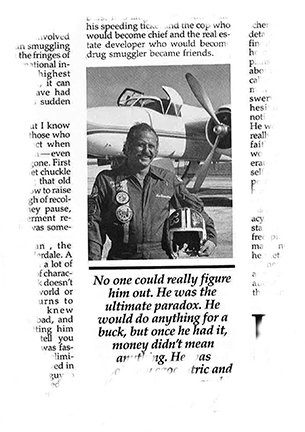
It has been 42 years since the World War II vintage P-51 fighter plane crashed in flames in the Mojave Desert of California. And almost that long since Gold Coast magazine assured the world that Ken Burnstine was really dead. He still is, 36 years later. And yet his legend lives on. Gaeton Fonzi’s book-length report, which appeared in three issues early in 1982, has proved to be the most enduring story in Gold Coast’s 53-year history. For more than a decade we have been getting requests for copies of that story. They usually come from someone with a personal interest in Ken Burnstine, an Ivy League educated, former Marine Corps officer, and prominent-developer-turned-big-time-drug-smuggler. How big? Burnstine died under mysterious circumstances while practicing for an air race, shortly before he was to testify against more than 70 associates in a massive drug running operation.
One of the requests a few years back came from a relative of a pilot who died in the crash of one of Burnstine’s planes. The man hoped the story might somehow show that his uncle was an innocent party, unaware that the plane he flew was a smuggling machine. Alas, he must have been disappointed. Burnstine’s pilots had to know what they were doing, loading up with drugs in the islands and Central America and flying at night on carefully planned routes to avoid radar and find secret landing spots around Florida. It was dangerous and illegal work, but they were well paid for it. And so were Burnstine’s investors, who doubled their money in a matter of days.
The most recent request, just this month, came from a man who said he was related to Burnstine. He is active military, suggesting he probably is too young to have known Burnstine. But he had heard about the articles and wanted to read them. Unfortunately, copies of those 1982 issues are few, but we had copied the pages for just such requests.
Burnstine was as colorful as the wildly painted P-51 he owned. That plane was his recreation. He had an enormous ego and loved attention, even bad publicity. He was often in the news for such things as keeping a lion in his home. Many people knew he was smuggling drugs for years before he got caught. Planes he owned were crashing filled with dope. People wondered how he got away with it. But at the time of his death he had been convicted and had turned government informant. His testimony at an upcoming trial could have sent dozens of South Florida people, some of them well known, to jail.
Fonzi’s story ended a myth that was even reported by the papers, that Burnstine had faked his death, that only a thumb was found in the plane’s wreckage, and that he was living the good life in Europe. Even today there are people who, if they remember Burnstine at all, suspect he evaded prison and is growing old somewhere with a missing hand. But Fonzi’s story quoted the coroner to the effect that more than just his thumb was found. His skull and teeth and the rest of his dismembered and charred body were also identified. Thus the title: “Ken Burnstine is
Still Dead.”
More dramatically, Fonzi revealed that there was a suspicion that his plane had been sabotaged with a motion activated bomb, which exploded when he showed off by rolling his plane at low altitude. Death prevented him from testifying against the many associates who backed his smuggling enterprise.
Moreover, Fonzi turned up information that even Burnstine’s closest friends did not know. He revealed that in the Marine Corps Burnstine was not a flier; he was a intelligence officer. Furthermore, for years he had some sinister CIA contacts. Fonzi, one of the best investigative reporters of his time, knew a lot about the CIA. He worked for five years for two government committees that had reopened the investigation of President John F. Kennedy’s death. He had connections beyond the scope of that work, which served him well when researching Burnstine’s murky past.
He learned that one man he was scheduled to testify against in the drug case was a supplier of arms to anti-communist Latin American groups. Fonzi wondered if one reason Burnstine avoided prosecution for so long was that he enjoyed protection by serving the government in some clandestine capacity. He interviewed Burnstine’s principal intelligence connection, who told him they had been good buddies, but had a falling out. It is obvious why. Burnstine could send him to jail. The connection also happened to be a specialist in sophisticated weapons, including devices designed to kill silently. Was one of those devices used to destroy an airplane and the notorious figure flying it?
We likely will never know. What we do know is that after 42 years, Ken Burnstine is still dead. And some people still care about his story. He would be thrilled.
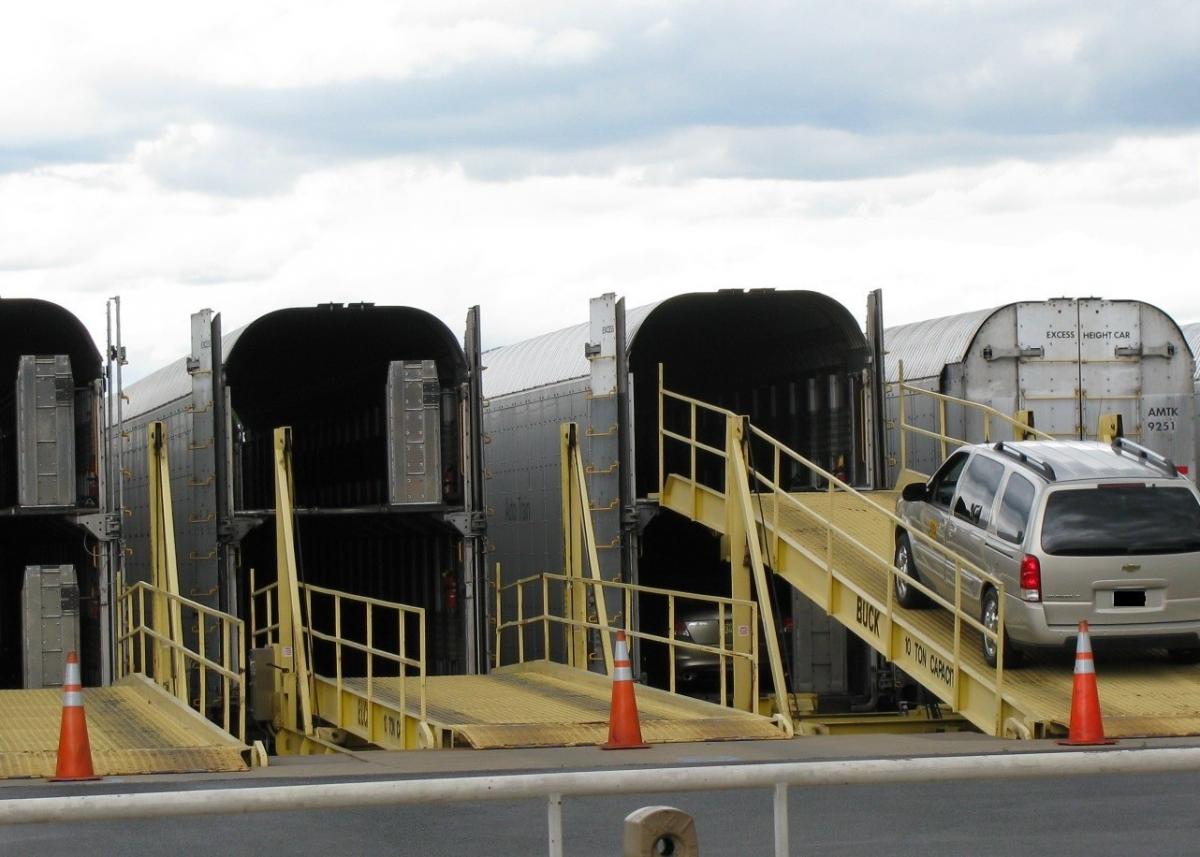
We were going north on the Auto Train last year. We chanced to sit at dinner with a middle-aged couple, and we chatted about Auto Train. I told them it was the only long-distance Amtrak train that made money. The man across from us said, “No, it doesn’t.” I told him, with my usual authority, that over many years the Auto Train either made money or broke even.
“This trip is losing $21,000,” he said. A bit annoyed at being challenged on a topic that I am the world’s leading authority, I asked him how he knew that.
“I’m the accountant,” he said.
Well, that will shut you up in a hurry. Having done some research on the matter, it appears true that Auto Train is losing money, although in the past it did not. But there is also a question of how overhead costs are allocated. But any way you do the numbers, the losses don’t compare with the losses incurred by regular long-distance trains. Trains lose money on people; they make money on freight, including cars. Auto Train can make money. I should know. I was a stockholder when the service was launched as a private company in the 1970s. It made well over $1million one year, before it got in trouble with a second train serving the Midwest. More on that later.
Since that encounter with the accountant, we have taken another trip on Auto Train, just last month, which may have set a world record for using it. We first rode it in the early 1970s, and have been on it almost every year since. Usually we take it only one way, but several times we took it up and back over the Christmas holidays. We are not alone. Auto Train patronage has remained strong ever since the government took over from the original private company in the early 1980s. It tends to reflect the ups and downs of the general Amtrak ridership, but it has remained fairly constant over recent years.
Obviously, our family is a fan, so big a fan that I have long wondered why such a sensible idea has not caught on around the country. Having recently completed a two-week train trip halfway around the country, I wonder stronger than ever. It seems that most, if not all, of Amtrak’s long-distance routes could support some form of this service. The fact is that the original Auto-Train Corporation considered the combination of an auto train with regular service in the 1970s. It was planned for the ill-fated train to the Midwest.
It was a good idea but badly executed. The train began service between its present southern terminus in Sanford, Florida and Louisville, Kentucky. The locomotives were too heavy for the tracks it used, which were not up to the standard of the east coast railroads. Several derailments led to legal and insurance costs, which forced the company out of business in 1981. Amtrak took over at that point.
Still, given the number of tourists and snowbirds who visit Florida from Chicago and other major cities in the Midwest, the train could have eventually been a success had it been better planned and executed.
Considering the volume of traffic on roads paralleling other Amtrak routes, such as California’s Coast Starlight from San Diego to Seattle, one has to think that an auto train combined with the present Amtrak service would make sense, especially if some of the minor station stops eliminated. Those stops would slow the service, but train riders are not in a hurry. It need not be a daily service, at least not until traffic warrants. Auto Train users generally plan well in advance. Amtrak already has a train that runs three times a week—the Cardinal loops from New York to Chicago by way of Washington and Cincinnati. One has to think it would greatly improve Amtrak’s bottom line, and help keep the future of rail travel from perpetual uncertainty.
From a traveler’s view, the Auto Train makes sense. Our recent trip north cost $940 for the overnight ride. We go first class, with a bedroom for comfort and privacy. A coach seat is much cheaper. Our fare also included two meals on the train. We returned by car because we detour down the scenic Shenandoah Valley and stop to see friends in North Carolina. Had we pushed straight through with 10-hour drives, we would have had one night’s hotel expense.
We actually stopped for two nights, and with fuel costs and meals, our expenses were $650. But we also had our car for 10 days in the north. Had we rented one as big as our Toyota Highlander, our costs would have exceeded the train. This does not include the wear on the vehicle for 1,000 miles of driving. And those miles get more nerve-wracking every year as the interstates grow more crowded, and delays for accidents and road construction get worse.
And there is no comparison between sipping a glass of wine on a train, looking out at the poor souls crawling along in a heavy rain, contrasted with being two days out in those elements and with reckless drivers weaving from lane to lane and blasting by you, even if you are doing 75 miles per hour.
We should note that from time to time Amtrak planners consider the auto train concept for other routes. They should stop considering and get this train moving. As this country becomes more crowded and its population more mobile, a national expansion is an idea whose time has come. In fact, it came almost 50 years ago.
Image via
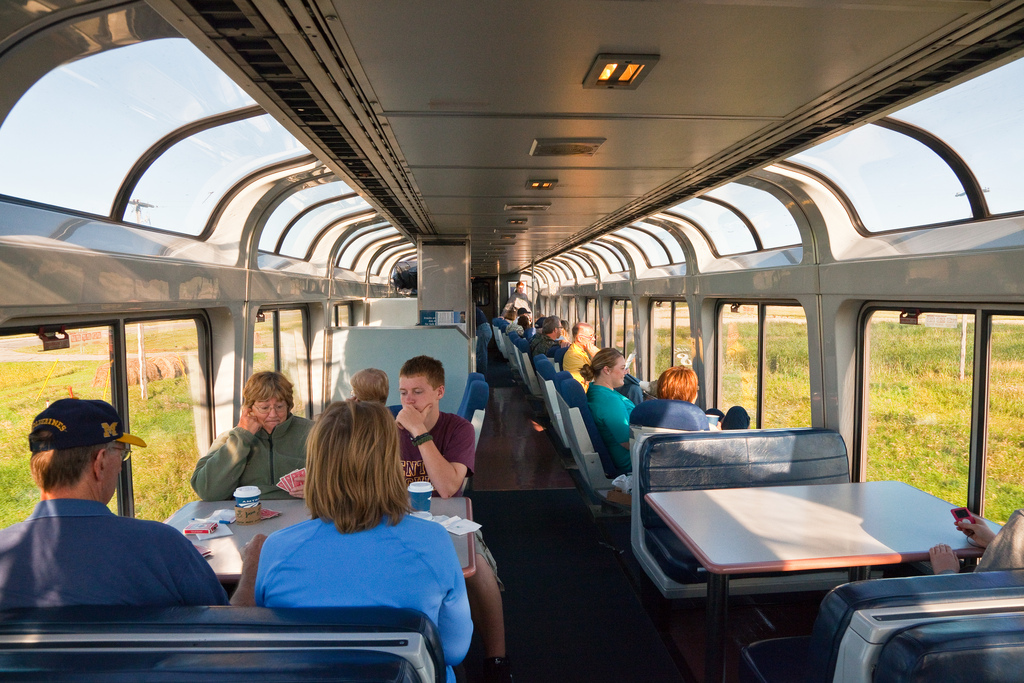
In essays describing our recent trip around the country by train, there was one element that is standard in such reports that we deliberately avoided—namely, our fellow passengers. We met some interesting ones, but detailing those interactions got in the way of describing some spectacular scenery.
First of all, it is very easy and at the same time not so easy to get to know people on a train. Many people just sit in their compact compartments or seats and read, look out the window or doze for much of their trip. The exception is the dining car for sleeping car passengers, where people are seated as they arrive. Attendants tell you exactly where to sit, and the next people to arrive are your companions for a meal.
People usually introduce themselves by first name only and exchange a few words on their backgrounds. You sometimes hear people hate to fly, but just as often they enjoy the change of pace a train offers. Invariably, they are not in a hurry, which means many are older and retired, or traveling, as we were, with younger family members. They were just along for the ride.
But the purpose of dining is to eat, oddly enough, which takes up most of these brief encounters—and they are brief. There are two or three sittings for lunch and dinner, depending on how crowded the train is, and the Amtrak staff, with great tact, manages to keep people moving. You don’t get life histories in these 30-minute interactions. One also tends to eat with some care. Trains rock even on the smoothest track, and it is not a good idea to spill coffee on a person you just met.
The lounge car is a different story. People who go there are motivated by the urge to enjoy refreshments and take in the views. Most Amtrak long-distance trains are bi-level. The lounge car has a downstairs bar with a few seats and an upper level, which is the one place where you can see easily out both sides of the train. It’s also an easy place to move around a bit and strike up a conversation with the person sitting near you. That we did whenever we could.
Our first encounter was on the ride from Los Angeles to San Francisco. We met an older woman who was en route from Southern California to visit family. She actually lives in Massachusetts in a pleasant college town. She was clearly high bred, from an elite eastern womens college. She had practiced family law in California before moving back east. She had been married 60 years, but her husband was not inclined to take a long train ride. He said, “You go alone,” so she did.
On the same trip, we spoke to a chap traveling alone from San Diego to Seattle. He appeared to be a very fit 50-something man. He was going north to take a trail hike. It must be a wild trail to travel that far. He hikes a lot. He has done the famous Appalachian Trail. He usually doesn’t do more than 20 miles a day. Originally from the Pittsburgh area, he had gone to California for college and never went back. By training a civil engineer, he switched careers to real estate investing and redevelopment. He does a lot of work on the east coast, especially in Savannah. He knew Fort Lauderdale well and mentioned Las Olas Boulevard.
He talked about the problems of rehabbing buildings in historic districts, all the requirements you had to meet to satisfy local preservationists. He seemed to have an amazing knowledge of things along the route until it was revealed he had a program on his cell phone that told him exactly what was going on each mile of the way. He even knew the name of a working oil field we passed. Did you know they had oil fields in northern California?
After a few days in the San Francisco area, we re-boarded the Coast Starlight for Seattle, where in the lounge car, as usual, we noticed a middle-age chap wearing a USMC cap with a number of campaign ribbons. It was an invitation to conversation. Sure as Quantico is in Virginia, he was a 22-year-old veteran of the Corps. He was returning from a visit to family in Southern California. He is from Oregon and was drafted after high school. He tested well, and the Marines wanted him. It was a good life. He served in Vietnam in 1968 but did not see much action. Pencil pusher. Remember “M*A*S*H?” He was Corporal Walter “Radar” O’Reilly and did paperwork for 3,000 men. Later stationed in Washington, D.C., he had a desk in the basement of the Capitol with a typewriter and was there 28 months. He never knew what he was supposed to do. He got the mail every day. Still doesn’t know what he was supposed to do. He married high school sweetheart. She died of cancer. He became quickly bored in retirement and went to school to become a bus driver. He now drives a regular route to Idaho. It’s a four-day gig. It breaks down once in a while. It’s a good life.
Same trip. Talked to a bald-headed man who could have been in the “Coneheads” cast. He was traveling after visiting his family. He now lives in Virginia near D.C. where he is a financial analyst. He wasn’t terribly talkative. He was looking forward to turning 72 and getting social security. As a financial guy, we trust he will spend it wisely.
After another two-day layover in Seattle, we got to the part of our trip we most anticipated. The Empire Builder is Amtrak’s busiest long-distance train. On the second day out we noticed a young fellow chatting with another passenger. When the passenger left, we struck up a conversation. He was from China and in the U.S. for school, but with his Asian accent we could not figure out exactly what school he was attending. He did seem to be a traveler. He had been on trains around the country and seemed to know the east coast pretty well. We got the impression he was trying to learn everything he could about the U.S. and enjoyed talking to strangers on a train. He seemed bent on improving his English. We told him he had just met America’s greatest authority on almost everything. He realized a joke when he heard one, even if he didn’t seem to get it. We wished him well. China could use a few good men.
We also chatted a bit on all three trains with our sleeping quarters attendants. In all cases, they were cheerful and attentive, a good quality for an attendant to have.
Conversations we did not anticipate were with Uber drivers. Our son, who was in charge of logistics for the entire excursion, is an Uber junkie, and we took the opportunity to pick the drivers’ brains as they hustled us from hotels to trains and around the sights of several cities. Our first driver in Los Angeles was a high-spirited lady who could not have been nicer. When we told her we were touring the country by train she offered to park her car and join us on the spot.
Of the dozen or so drivers we met, only one or two spoke little English, but the rest were impressive people—tour guides as well as drivers. They all had immaculate vehicles of recent vintage, and they drove carefully and well. Only one of them seemed to be working full-time as a driver. He had worked for Boeing in Seattle. He seemed to be a college dropout still finding his way in a young life. Another was a retired teacher with a platinum Einstein hairdo who entertained us as he drove. He was a Michigan grad and big fan of Wolverine football. When we mentioned our son went to Notre Dame, he offered to let us out of the car right there and then.
One of the drivers in the Seattle area was a slender woman about 40 who did not say much until we asked questions. She was Canadian born but had lived in the U.S. for some time. She seemed overqualified to be driving for Uber. Turns out her real job is a life coach, one of those people, as you may know, who coach people about life. We asked where she lived before Seattle, and she said, “Schuylkill Haven, Pennsylvania.” We told her we knew it well, just down the road from Pottsville. We asked her if she was familiar with Swedish Haven. She hesitated, and then said, “No.” We told her that was the name John O’Hara used for Schuylkill Haven in his numerous novels and short stories set in the Pennsylvania coal regions. We sensed she had no idea who John O’Hara was, or that he was once a best-selling author, and is still considered one of the great short story writers of his day. What the hell, his day ended in 1970. Sic transit gloria mundi.
Still, few people up that way do not know the name John O’Hara. In his lifetime he was despised for his portrait of the area whose hard drinking, sex-crazed characters often resembled real people. Today, he is a tourist attraction, literally. They have tours of the many places that appeared in his stories.
We met these interesting strangers on trains and still wonder what a life coach was doing in Schuylkill Haven. She obviously wasn’t a coal miner’s daughter.
Image via

In previous blogs, we have described our effort to travel around the country by Amtrak. We got as far as San Francisco before the complications of life delayed our reports. Several weeks later, rather late than never, which could serve as an Amtrak slogan, we continue our journey. First, we note the train from Los Angeles to San Fran was only mildly late. It was right on schedule until we lost about 20 minutes waiting for a freight train to clear the track only a few miles from Oakland's Jack London Square Station, the Amtrak stop serving the Bay Area.
After a most pleasant visit with relatives, we continued north toward Seattle on the same train that had brought us from Los Angeles. It was a bit late, which is on time by Amtrak standards. It leaves Oakland a bit late in the day, so much of the journey is made in darkness while those of us with bedroom accommodations are trying to rest. We can report, however, the sun also rises in Oregon, and the final hours of that leg were slow but spectacular. The brown hills of California—California PR people have always called them “golden”—had been replaced by dense, green mountain forests. Not so late we pulled into Seattle's King Street Station.
The weather was borderline miraculous and had been ever since we set out in New Orleans. The locals, who are used to damp and misty mornings, advised us to enjoy the blue skies while they lasted. That we did, especially on the ferry ride to Bainbridge Island, where we had rented an Airbnb on the water. It was a beautiful spot, just one of several scenic islands on Puget Sound. Here, the family—we had been joined by additional relatives in San Francisco—hosted a little party. The guests were Brian and Kavita White. Both formerly worked for the Sun-Sentinel. He was sports editor and now is sports editor for MSNBC in Seattle.
After enjoying Seattle's ridiculously busy tourist district for a day or two, we were back at the King Street Station, ready to board one of the jewels of the Amtrak system—The Empire Builder to Chicago. The train did not make a good first impression. It is the beginning of the line, so there were no freight trains to blame, but it was an hour late just showing up at the station. But if you have to wait at a station, King Street is the place to do it. Built in 1906, it opened in an era when railroads were the modern mode of travel, and rail companies took pride in the architectural distinction of their big city terminals.
Some cities have let these old stations be destroyed. New York's Penn Station is a prime example. Its tracks remain underground, but the old station was razed to make room for Madison Square Garden. Seattle, however, preserved its elegant station and modernized its passenger platforms with a glass walkway over the tracks, leading to CenturyLink Field, home of the Seahawks, and nearby Safeco Field, the Mariners ball park. It also serves a busy high-end commercial district nearby.
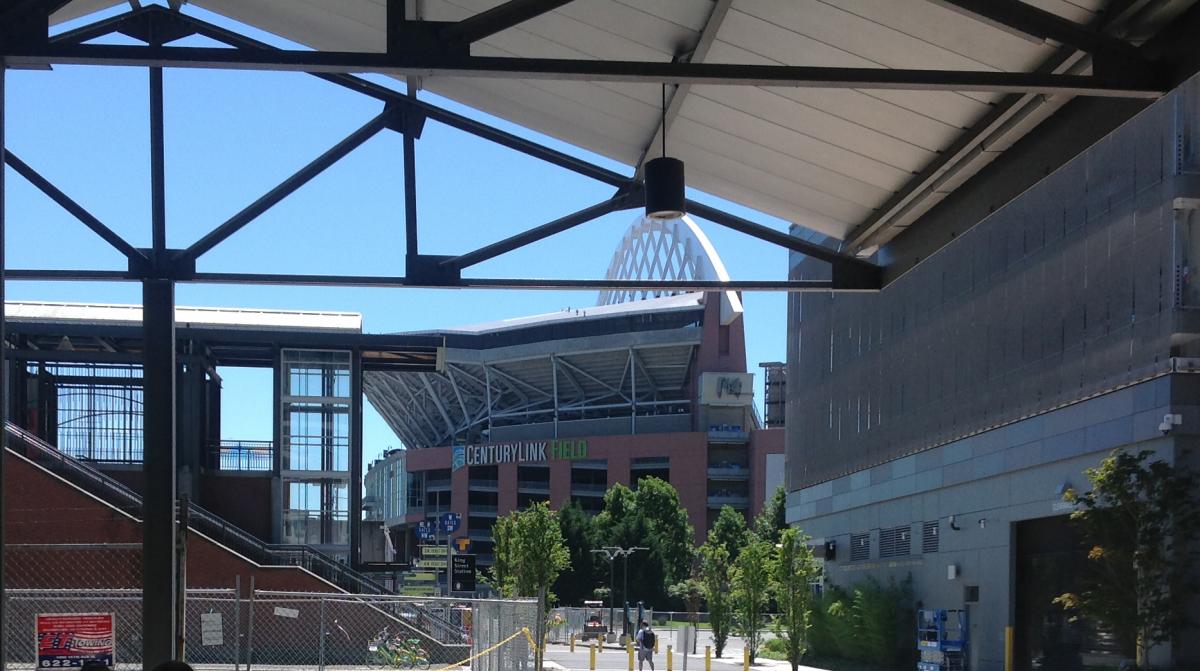
Once underway, the Empire Builder lived up to the billing. It begins with a late afternoon ride along the edges of Puget Sound. As with the Coast Starlight along the Pacific, there is nothing between the tracks and the water as the train weaves its way into the hill country of eastern Washington. Night closes the view, and when daylight returns the train has crossed the northern sliver of Idaho and is entering Montana's Glacier National Park. Amtrak times its schedules to provide daylight views of its best scenery, so even when a train is late, as we were, there is still prime time visibility. This majestic section of the northern Rocky Mountains was preserved by the railroad when it came through in the 1890s. The management of the Great Northern Railroad—now merged into BNSF—lobbied for the park's creation in 1910, sensing it was creating its own tourist attraction. And that it has. The lounge car, with its visibility on all sides, is jammed for the ride through the vast splendor of the park.
The train was now seriously behind schedule, and the situation did not improve as it exited the mountains and entered the rolling brown hills of North Dakota, sections of which resemble a basket of biscuits. Soon the Great Plains were reached, and another nightfall breaks the monotony of endless flat vistas broken only by grain elevators gleaming silver in the late day sun.
Morning brings much of the same, but by now most of North Dakota has been crossed, and the plains are now rolling into Minnesota. The railroad, which had been skirting the Canadian border for hundreds of miles, begins angling to the southeast, bent on reaching the twin cities of Minneapolis and St. Paul. Alas, it was now reaching them some five hours behind schedule.
There is a reason this train runs so late. In recent years there have been natural resources discovered along the route, greatly increasing the volume of freight traffic on a line that still has miles of single track. That means trains pull off on occasional sidings to let traffic pass in the opposite direction. The train that stops is usually Amtrak. Railroads vary in their treatment of Amtrak. Some take pride in keeping the passenger trains on schedule; others treat hosting Amtrak trains as something of a corporal work of mercy. They almost always give priority to their moneymaking freights. It does get tedious when you sit for 15 minutes, looking out a window at land that does not have so much as a grain elevator for scenery. That's if you are lucky. As often the view is blocked by what seems like a 20-mile long freight rolling by at 10 miles per hour. BNSF (that’s Warren Buffett’s railroad) has been double tracking to relieve congestion, but that is a slow job. It is working with the state of Idaho to remove a major bottleneck. A 1.6-mile bridge built in 1905 has only a single track, and the railroad wants to build another bridge. That’s a serious project, but it's one that needs to be done to speed up traffic. The delays were not unexpected. We had checked out the on-time performance of the three trains we rode, and the Empire Builder was known for delays.
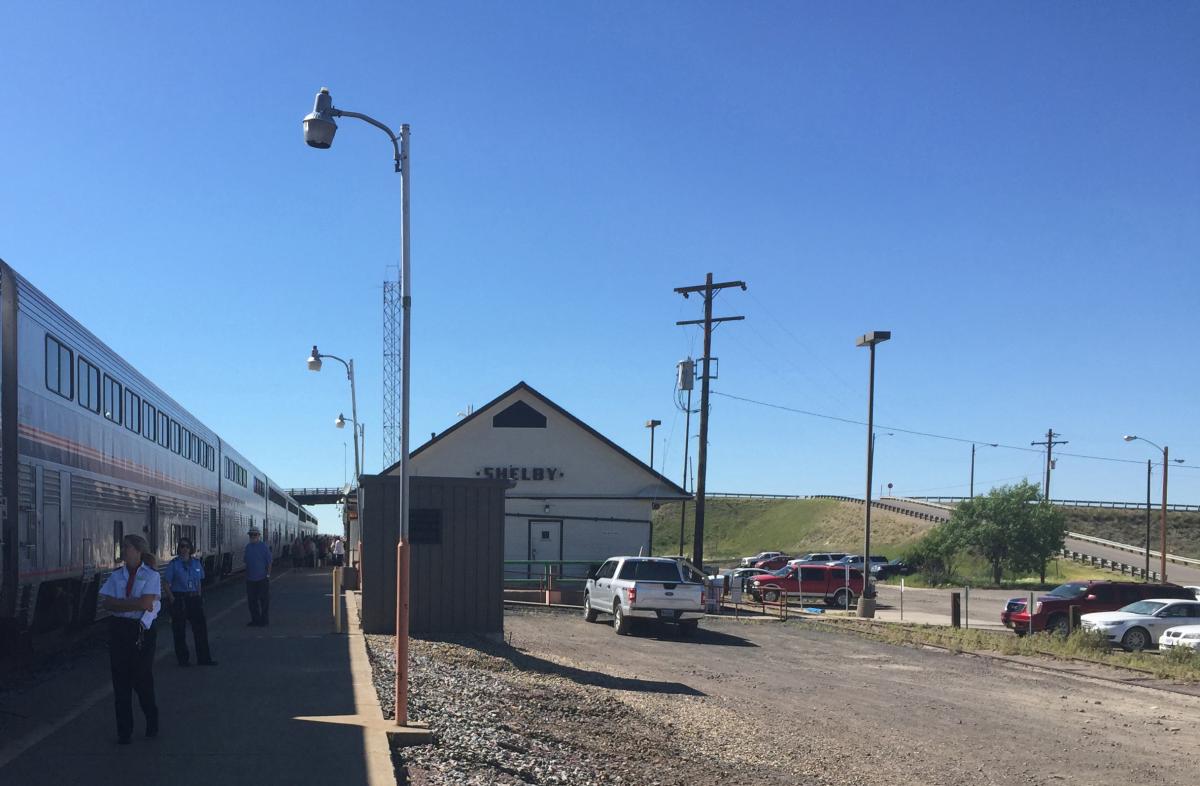
Still, after being on a train for more than two days, the lateness becomes irritating, but it was worse for passengers who planned to meet other trains in Chicago. There apparently were more than a few in that category, and there were announcements of arrangements being made to accommodate them if they missed their connections. Some were advised to detrain before we reached Chicago. I don’t recall the reason for that; it did not affect our family group, and we were staying overnight before flying home.
It did take away from the fact that the train seemed to make up some time as it entered the fast corridor from the Twin Cities through Milwaukee and into Chicago. We recalled that back in 1930, a steam locomotive racing from Milwaukee to Chicago set a speed record of 104 miles per hour. Today Amtrak has a speed limit of 79 miles per hour, the exception being the Northeast Corridor, which is owned by Amtrak and allows speeds over 150 miles per hour. We should note that people who ride long distance trains are generally not in a great hurry. Since the Wright brothers, there have been faster ways to cross the country.
The purpose of our trip was the trip, and my son Mark and his family joined on various legs. The journey, which included two layovers, took just about two weeks. For the grandkids, who have been to Italy and Ireland, it was a chance to see their own country from the same level as those hardy souls who first crossed it some 200 years ago. Home for a few days, we asked Mark to reflect on the journey.
“There are a lot of farms in the United States,” he said.
Image via
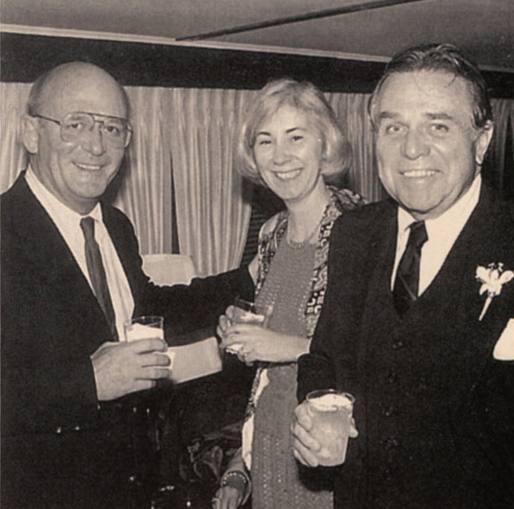
There are a lot of magazines out there. Estimates of city/regionals range into the thousands in a genre that hardly existed 50 years ago, which means there are a lot of people writing, selling or designing magazines that are aimed at specific communities.
Very few of these people can claim to have invented anything new. Almost all the local magazines run the same kinds of stories and carry pages of people enjoying themselves at social functions, usually for a worthy cause. If one organization finds a gimmick that sells, such as Top Docs, others are quick to follow. There aren’t many people who have actually come up with a fresh idea. John Broderick was one of them.
Broderick, who died July 31 at age 89, found himself in a difficult position in the late 1980s. He had been hired to run a dying local magazine. It was called The Best. Yolanda Maurer, the same woman who had started what is now Gold Coast magazine 20 years before, had launched it. And, as she did with her first magazine, she sold The Best as soon as it started to look successful.
The new owners were not magazine people and lived elsewhere. Without Ms. Maurer running it, their magazine quickly declined. They hired Broderick to try to save their investment. He had recently sold his own publication, Swimming Pool Weekly, a trade newspaper based in Fort Lauderdale. We met in 1972 when our publications were in the same building. We saw a lot of each other, especially when half of the Sunrise Professional Building (now the Galleria Professional Building) repaired to Nick’s Lounge at cocktail hour.
He was a memorable personality and great salesman with an engaging smile and knack for coining marketing phrases such as "our proprietary research shows..." Nobody knows what that means, but we train our sales force to employ it when in doubt.
By the late 1980s, the owners of The Best were weary of losing money. They basically walked away. Broderick decided to put out one last issue that might survive as its own entity. The idea he came up with was “Who’s Who In Charity and the Arts.” There were some charity registers around, and several South Florida magazines had long featured people at charity balls. But nobody had devoted an entire glossy issue to the charities and people behind them.
He sold it as an annual publication; it did not break anybody’s advertising budget. Charities felt that they had to be in the book to be taken seriously in the world of philanthropy, and prestige advertisers wanted to support the organizations that were often associated with their wealthy customers.
The concept worked well enough that Broderick repeated it several times, just long enough for us (after a nine-year legal battle) to regain control of Gold Coast and use the concept as our first comeback issue in 1991. Broderick stayed aboard as associate publisher for several years. He mainly sold ads, but his good looks and versatility allowed him to pose on short notice for a memorable Gold Coast cover.
By the mid-1990s he had the satisfaction of not only seeing his “Who’s Who” concept grow in our pages, but year by year it'd appear in an increasing number of city/ regional magazines. Today, even long-established magazines such as Philadelphia, New York, Washingtonian and Texas Monthly run variations on the concept. It is a rare regional magazine that does not have annual philanthropy features. Many list pages of charities and their calendars of events, exactly the same as Broderick did in the 1980s. Ironically, our annual philanthropy presentation comes up in our next issue, the 30th anniversary of the year it all began.
Although Broderick made advertising and publishing his career, he could have succeeded in other fields. His sales skills would work in any industry. He was also gifted musically. He was a fine singer and could play the piano and just about any other instrument he got his hands on. He was proud of his Irish background in Pittsburgh, and his “Danny Boy” was much in demand. We used to announce a “Danny Boy” contest on St. Patrick’s Day at Gaffer’s pub (at the time across from Holy Cross Hospital) and pronounce Broderick the winner, whether he showed up or not. He usually showed up. Then there were lunches at Wally Brewer’s Olde Town Chop House in the mid-1990s. Broderick, his friends and a hundred of Wayne Huizenga’s Blockbuster crowd keep that joint going, and several times when the regular piano entertainer was absent, Broderick would sit down and entertain the diners with his playing and songs.
He was also a bit of a historian, especially in military matters. He liked to talk of his father’s participation at the battle of the Marne in World War I. And he was proud of his own service with an artillery unit attached to the 18th Airborne Corps. That was just before he moved to Florida in 1952. His legacy presentation on the Iinternet shows several photos of him in uniform and posing with military hardware. His burial will be in a national cemetery in Lake Worth.
In his prime, the man was highly mobile, always ready to “meet you at the corner” and an uplifting spirit for all who met him. But a hip injury from a fall kept him in a wheelchair and largely close to his Pompano Beach apartment with his wife of 34 years, Jane, for the last few years. He was the proud father of daughter Eithne of Massachusetts and sons Sean and Tim Broderick, both of Fort Lauderdale. His first wife, Mary, died earlier this year. He also had several sisters who lived in South Florida, shared his high-energy personality and predeceased him.
There will be a memorial mass Saturday, Aug. 18 at 11 a.m. at St. Martin Episcopal Church in Pompano Beach.
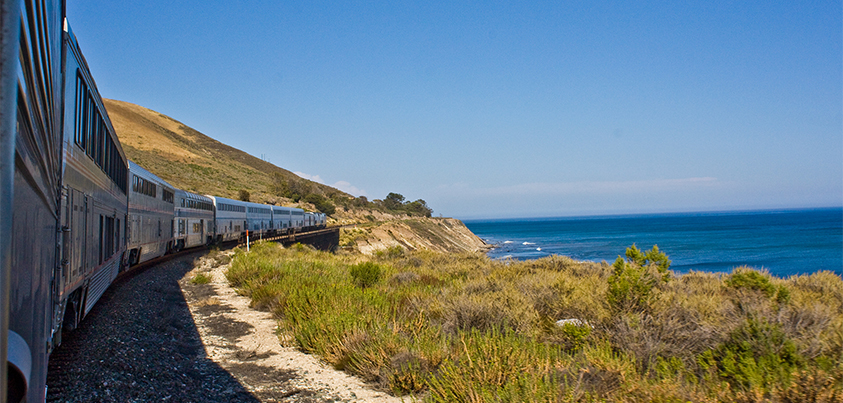
San Francisco - The purpose of the trip was the trip. With Amtrak under usual pressure, there is no telling how passenger trains as we know them will exist. Sure, the high- speed Acela on the Northeast Corridor is not going anywhere, except between Boston and Washington where it is always busy. You can get from New York to the nation's capital almost as fast as it takes to go to and from the major airports for those cities. And our own Brightline, moving with alarming speed through our congested Gold Coast corridor, has a future as bright as its name.
Rather, we speak of those historic long-distance trains on the routes that built the country, crossing the sprawling plains and majestic mountains and memorialized in such songs as "City of New Orleans," "Rock Island Line" and "Chattanooga Choo Choo.” They also resulted in toy Lionel trains in the flashy colors of the Sante Fe or Baltimore and Ohio railroads, circling Christmas trees in countless homes. Those were the days before airplanes began making journeys in hours that took trains days.
Our concept was to take Amtrak around the four corners of the republic, beginning in Florida heading west and ending in New England heading south. Alas, Amtrak service to the west no longer begins in Florida. A damaged bridge a few years back had stopped that service. You have to set forth from New Orleans, which we almost did. Until a vicious and highly contagious stomach virus, which also affected five members of the family back in Florida, struck this author in New Orleans. We were half dead in bed when Amtrak's Sunset Limited, bound for Los Angeles, left the station.
But two days later, healthy again, our party flew to Los Angeles and boarded the Coast Starlight for San Francisco. It is a long day's journey into night, but before the sun sets, the train runs for miles right along the Pacific (above), often with nothing but nature between the tracks and the surf. As requested, God provided sensational weather. It is considered one of the visual treats of the Amtrak system. In a sense, it is also the most confidential. There is a long, spectacular piece of coastline that is privately owned. No roads approach the beach, so unless you are a guest of the landowner, the only way to capture this memorable view is aboard a train.
More accessible to the working classes is a stretch of mountainous track that follows as the train moves inland at San Luis Obispo. This part of the trip is necessarily slow as the serpentine track rises high above adjacent highways. There are several horseshoe curves where passengers at the end of the train can see the engines in the front, and look back and down at the section of rail just passed. The slow speed is actually a benefit, providing travelers time to absorb the spectacular views. Those views and slow pace end as the Coastal Starlight enters the Salinas Valley, made famous in John Steinbeck's fiction. The train reaches its 79 miles-per-hour speed limit as it races toward Jack London Square in Oakland, California.
Our breaks on the trip were meant as just that—a chance to detrain and relax. But they also turned out to compete with the train in terms of fun and interest. This was especially the case in San Francisco, where my brother and his family live. Frank first went to California with the Navy (he was NROTC at Villanova) and wound up getting his Ph.D. in economics at the University of California at Berkley. After time in D.C. with the Federal Reserve, he returned to San Fran as an economist for Bank of America. He also taught economics in the University of California system.
His daughter, Erin, who also has a Ph.D. in economics, is married to Eric Godtland, who grew up in Montana and received a bachelor’s degree in economics and a master's degree in industrial engineering from Stanford. He had an interest in music and, living in San Francisco, he helped form the rock group Third Eye Blind. For 17 years he was their manager. More recently, he helped longtime friend Victor Willis revive his career with The Village People. Willis is famous for writing the lyrics to “Y.M.C.A.,” the song that has attained cult status and is often played at sporting events, notably at the New York Yankees games. Their ground crew joins in with the iconic dance gestures that have long been wedded to the music.
We spent a day with this interesting guy at the family's weekend home in the Sonoma Valley. The house narrowly escaped last year's disastrous wildfire, which left so many homes in the valley as blackened foundations. The house nearest to it burned down, but the fire was stopped by the valiant work of a prisoner group, who volunteered for the dangerous work. They are good men themselves, despite their current residence.
That night we were back on the rails, headed toward Seattle rocking and rollin' toward new adventures in this century of wondrous change.
Image via
New Orleans: Mardi Gras, Bourbon Street, Cajun cuisine, ancient streetcars, Tulane, Katrina, one of the more pleasing uniforms in the National Football League and old southern folks who sound more like Yankees. These are the things that come to mind when you hear this city mentioned. Add to that list one more—The National World War II Museum.
We must join the embarrassed regiments of those who never knew this remarkable historic treasure existed, despite the fact that it has become one of the city's biggest tourist draws.
The buildings themselves are impressive and located in a redeveloped section in the heart of downtown. The museum is split into several sections in connected buildings, dividing the war into theaters, Europe and the Pacific, just the way it was. Hundreds of the primary weapons of both sides are displayed, along with films showing them in use. If you have never been run over by a 56-ton German Tiger tank, one of the films shown in an IMAX theater will suggest the thrill. Seats vibrate and sound booms from every angle when the Navy twin 40s anti-aircraft guns open up on a Japanese kamikaze bomber. You see through the eyes of the landing officer as he waves his paddles to guide a Douglas Dauntless dive bomber home to the deck, and almost feel you are one of the sailors racing to the aid of a pilot who misses his landing and careens toward the edge of the flight deck.
We spent about four hours in the museum, but such is its scope that we missed the one exhibit I would most like to have seen. I spent time in the Navy aviation pavilion, hoping to see some footage on the airplane in which my cousin, Lt. j.g. Thomas F. McCormick (pictured below) lost his life at Iwo Jima. He was a reconnaissance pilot who flew a catapulted floatplane off the Battleship USS Tennessee. The plane was the Chance Vought Kingfisher, probably built at the Naval aircraft factory at the Navy Yard in Philadelphia, where Tommy McCormick spent much of his life and played football at what is now La Salle University.
I was just old enough to remember him vividly when he came home after his first cruise at Christmas in 1944. The Tennessee had just participated in the invasion of the Philippines. He was a great looking guy, dark-haired and big. My brother, three years younger, does not recall him. Tommy died at Iwo Jima two months later, and only in recent years did we learn he had already survived one close call when his plane crashed while making a tricky water landing next to the big battleship. He and his radioman escaped, but the plane was lost. We also learned—through the kindness of Paul Dawson at the USS Tennessee Museum in Huntsville, Tennessee—that Tommy was probably shot down by friendly fire. We knew that there was no explosion when suddenly his plane broke in half. Observers on his ship reported two airplanes might have collided.
Paul Dawson, whose father had been the ship's photographer and actually knew my cousin, discovered an after-battle report, which probably had not been seen by human eyes for 60 years. For good reason it was marked "confidential" at the time. It suggested that a high-angle shell hit his plane, which flew at low altitude in order to observe the effect of our bombardment on Japanese positions. The shell never exploded as it went through the little Kingfisher like tissue paper. It cautioned against such possibilities in the future.
What we missed at the museum was a film that included the most famous Kingfisher event of the war. It also involved the most famous submarine of the war. The USS Tang sank more enemy ships than any other sub. It also took part in an amazing rescue operation with a Kingfisher floatplane in April 1944 off the Japanese island base of Truk (now known as Chuuk). The floatplane, piloted by Lt. j.g. John A. Burns, flew off from the battleship North Carolina. It had picked up six downed airmen in the Truk Lagoon during a major attack. Men were sitting on the wings and fuselage. It was so overloaded and damaged by rough seas that it could not take off. Burns, under enemy fire from the shore, taxied his plane to the Tang, which picked up all the men and then sank the damaged aircraft before escaping.
Burns received the Navy Cross for his heroics. Coincidentally, he was also from the Philadelphia area. He and my cousin were the same age and had enlisted about the same time. It is possible they knew each other. We will never know. On Feb. 26, 1945, exactly one week after the morning Tommy McCormick was killed in the Battle of Iwo Jima, the Philadelphia papers reported that war hero John Burns had died in a crash landing at Naval Air Station Oceana in Virginia.
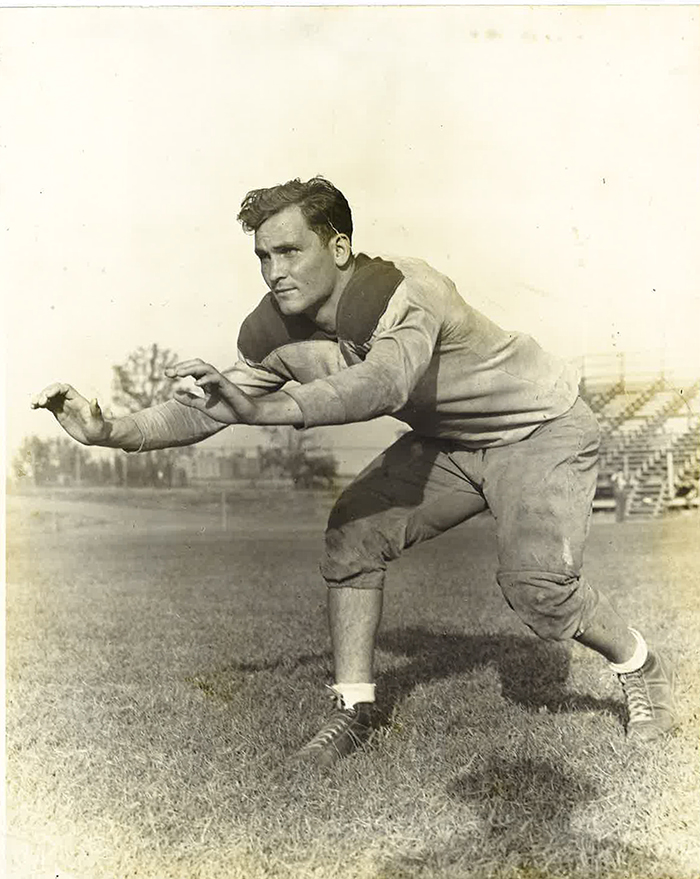
Tommy McCormick at La Salle College in 1941
Main image via
NEW ORLEANS - This quaint old city tells you why Fort Lauderdale was right in nixing the downtown trolley idea. New Orleans has trolleys, and the oldest ones are pushing 100 years old, which is older than the average South Florida winter resident. Trolleys older than the ones I rode as a kid in Philadelphia—and they were old then—are still heavily used by locals and tourists alike. They are the equivalent of San Francisco's cable cars; riding one is a must for visitors.
The reason trolleys survive and thrive here is illustrated above. The city's broad Canal Street has medians wide enough to permit two tracks, so even though the trolleys are slow, they can keep pace with cars on both flanks. And once the trolleys escape the heart of downtown, they still have their own rights of way and move along at a reasonable pace.
They most famous line is St. Charles where the old vehicles rattle along a grass median, shaded by ancient oaks, sometimes reaching the breathtaking speed of 25 miles per hour. In good weather, the windows are open and signs warn against sticking your head out. Branches are often inches away, sometimes even brushing the sides of the cars.
One reason the old trolleys have endured (some built in the 1920s) is because they are one of the best ways to see the city. The St. Charles line is spectacular, passing through blocks of large ornate old homes and apartments before reaching the impressive campuses of Tulane and Loyola universities. In that respect, the 1920s pace is an asset. Gawkers have plenty of time to enjoy the view. One fare takes you to the end of the line and back. They run about 10 minutes apart, so if you miss one—or it is too crowded as it often is in the downtown section—there is usually another visible down the track.
Fort Lauderdale's proposed trolley, while 100 years more modern, was antiquated in the most important sense. It had no dedicated right of way. Had Fort Lauderdale planners been willing to sacrifice a lane of traffic on some of the broader, busier streets, it would have been a different story. But the times made that impossible. New Orleans transit planners were well ahead of Henry Ford. Horses pulled their original trolleys—in 1835.
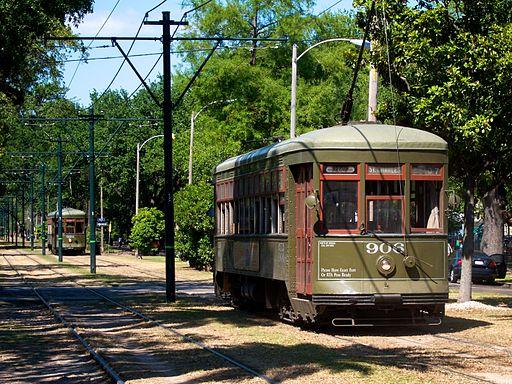
Secondary image via
